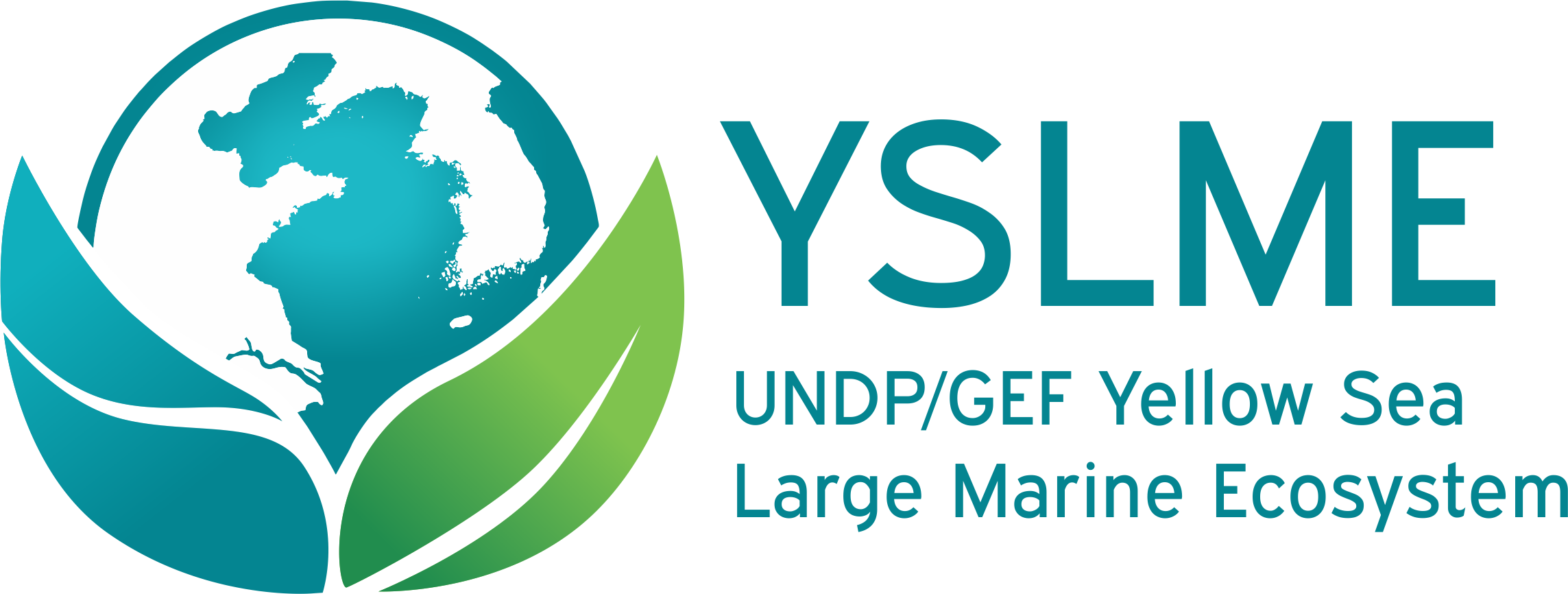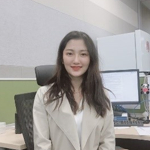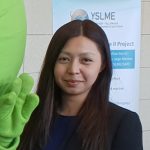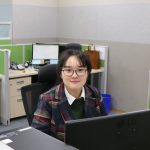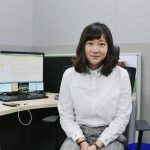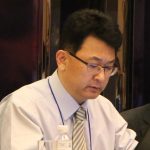
To help share advances in fishery science and technology, experts from the Yellow Sea Fisheries Research Institute (YSFRI) of China, Chinese Academy of Fishery Sciences, West Sea Fisheries Research Institute (WSFRI) of RO Korea, National Institute of Fisheries Science (NIFS) of RO Korea, and Nanjing University in China, presented their recent research progress on fishery resource in the Yellow Sea, mariculture techniques of shellfish, genetic breeding of algae and sea cucumber, aquaculture disease of marine fishes, marine environment safety assessments, etc.
About 30 experts from both China and RO Korea attended the academic workshop. China and RO Korea also conducted in-depth discussions on the sustainable development of the Yellow Sea fishery. A preliminary opinion was reached on the content and methods of future cooperation between the two parties, for example, to conduct the cooperative research on fish and shrimp farming. Both sides agreed that the joint training of talents should be promoted in the future.
The event was opened by Dr. Xianshi JIN, YSFRI and Dr. Woo Jeung CHOI, WSFRI, with Ms. Zhihong LIU, Director, YSFRI serving as moderator. The main academic presentations are detailed below.

Dr. Liu Fuli (YSFRI) gave a presentation entitled “The Breeding of New Cultivar of High-Temperature Tolerance and the Molecular Mechanism of High-Temperature Tolerance in Saccharina Japonica”. S. japonica is a cold-temperate species that often suffers heat stress during cultivation in temperate and subtropical zone in China. Thus, improving the heat tolerance of the cultivated S. japonica is very significant. A new Saccharina variety ‘‘Huangguan No. 1’’ was bred successfully. This new variety has an excellent performance; particularly, it has stronger resistance to high temperatures. The molecular mechanisms of the increased heat tolerance of the varieties are poorly understood. To explore the response to heat stress on molecular level, RNA-seq method used to identify the differentially expressed genes (DEGs) and differentially expressed miRNAs. Based on function annotation of DEGs and the target genes of miRNAs, a set of genes were identified as the candidate genes in response to heat stress. Additionally, comparative proteomic was applied to identify the differential expressed proteins (DEP) under heat stress. A total of 104 and 107 proteins were identified as the DEP in the sporophyte and gametophyte, respectively. These results will provide new insights into the regulation mechanism in response to heat stress in S. japonica.
Dr. Ding Qi (YSFRI) presented on the “Ecological Footprint and Vulnerability of Marine Capture Fisheries in China”. This study first systematically evaluated the exploitation history of marine capture fisheries in China, focusing on the historical exploitation behavior of fishing fleets from the 11 coastal provinces and municipalities. Using the framework of vulnerability, it then presented the most detailed comparative study to date on the vulnerability of these coastal provinces to the impacts of a reduction in marine catches.

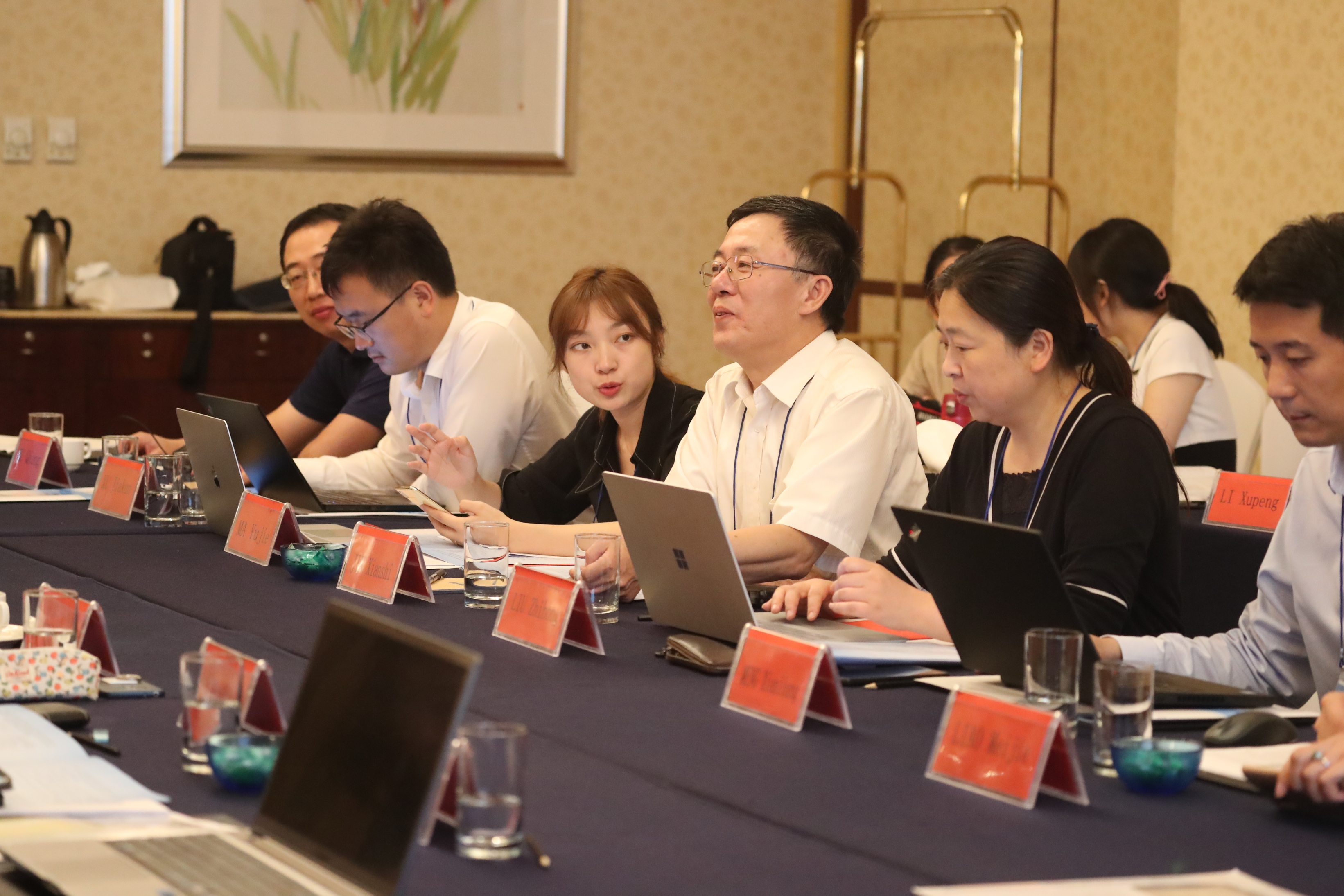
Dr. Liao Meijie (YSFRI) presented on the “Genetic Evaluation and Selective Breeding of Sea Cucumber (Apostichopus japonicus)”. The genetic diversity and structure of eight (8) sea cucumber populations from China (Qingdao, Yantai), RO Korea (Kunsan, Mokpo and Posco) and Russia (Vladivostok) were analyzed using microsatellite and mitochondrial DNA sequencing. Microsatellite cluster analysis and phylogenetic analysis of COI gene showed that the genetic structure and differentiation of different populations of sea cucumber were not only related to geographical location, but also affected by ocean current. There was no significant genetic differentiation among the three populations with different body color. Dr. Liao also introduced a new sea cucumber variety “Shenyou No. 1” (GS-01-016-2017) bred by YSFRI. It was selected for four generations by means of mass selective breeding. The survival rate at six-month-old after Vibrio splendidus infection is 11.68% higher than that of unselected sea cucumber. Using pond culture type, the body weight and the survival rate at harvesting time is 24.46% and 23.52% higher than that of unselected sea cucumber. It has valuable application for the sea cucumber culture.
Dr. Wu Qiang (YSFRI) presented on the “Changing States of the Food Resources in the Yellow Sea Large Marine Ecosystem under Multiple Stressors”, summarizing the changing states of the food resources in the YSLME under multiple stressors from 1958 to 2015, including the changing states of biomass yields, species composition, trophic level and biodiversity. The results show that the changing trends might be out of the anticipation. There were no significant decline of biomass yields, trophic level and biodiversity after 1980s, and the mainly decline happened before 1980s. However, the species composition changed a lot, that is, over the past half century there were two different types of dominate species shift in YSLME under multiple stresses. One was from demersal, high value species to pelagic, lower value species shift during 1958-59 to 1998-2000, and the other was from pelagic, lower value species to demersal, low value species shift during 1998-2000 to 2014-15. For future sustainable development, it is still necessary to further strengthen adaptive management.
Dr. Jin Yue (YSFRI) presented the “Age, Growth and Microchemical Characteristics of Two Loligo Squids” where he first introduced the catch trend from global range and within China, to emphasize the economical and ecological importance of squid. Therefore, it is vitally important to get knowledge of life history traits on these two neritic squids. His study focused on microstructure of statolith and he introduced the methodology of statolith processing to get the age. He compared the age of same squid species from different studies and found that age determination methods are not standardized. He established age and growth models for two studied species and back-calculated the hatching month of the two species. The element composition of statolith was analyzed and was used as species identification tools. Lastly, migratory patterns of the two neritic squids were speculated.
Dr. Zuo Ping from Nanjing University gave a presentation entitled “Gradient Pressure Analysis Based on Spatial and Temporal Changes Caused by Fishery Catch Along Chinese Yellow (Bohai) Large Marine Ecosystem”. She first reviewed the global fisheries catch status in the recent years. Then the captured fishery landings for different provinces were analyzed to see if there are differences of fish size and species among provinces. She also reviewed the fisheries policies in the last three decades. The policies consist of fishing licensing, double control system, fishery proliferation and larvae release, off-season fishing restriction, fishery catch reduction, marine protected areas and marine ranching and some others.
Dr. Un Ki Hwang (WSFRI) presented the “Studies on marine environmental safety assessment using organisms’ effects in NIFS”. His study was composed of three items: the development of test manual, application of coastal sediment assessment and assessment of single and mixed toxicity of coastal pollutants. The test manual contains detailed information on the principles of measurements, test organisms and test conditions. The publication of this book and its use as a process test method are expected to broaden the base of ecotoxicity studies. Collected were 58 sediments during the February and August for the assessment on the sediments contamination using the normal embryogenesis rates of sea urchin and oyster. The most common way to determine the morphological variation of individual or population unit. Also, Dr. Hwang conducted genetic research. Sediment pollution has been observed as morphological change from genetic change, and it can be used an indicator gene to identify pollutants.
Seokryel Kim (WSFRI) presented on the “Characteristic of Parasitic Leech, Limnotrachelobdella sinensis in Carp”. In March to May 2017, mass mortality in a population of crucian carp, Carassius auratus occurred in Miho and Byeongcheon river, RO Korea. Many leeches were isolated on the surface of operculum in the sampled fish. The morphology of leech and host reaction by leech were studied by means of light and electron microscopy. On the inner side of each operculum of C. auratus (n=10), the leeches of 1-4 individuals were parasitic. The leeches had approximately 41.0 mm in total length and 11 mm in width. This body was composed with anterior sucker, neck, trunk and posterior sucker and respectively average length were 2.3 mm, 7.2 mm, 23.3 mm and 8.7 mm. Both sides of the trunk lateral vesicle of 11 pair existed. When observed by SEM, anterior sucker was hemisphere shape and the mouth where proboscis comes out existed with the its center. Proboscis was connected the esophagus directly. Under light microscopy, bloodsucking gill of C. auratus observed lamella fusion, hyperplasia the epithelial cell of the filament and lamella, increased mucocytes and blood congestion. On the other hand, necrotic and edema epithelial cell of the lamella, and appearance of the macrophages from some individuals were thought the secondary infection with the bacteria or virus after bloodsucking activity of the leech.
Dr. Young Baek Hur (WSFRI) presented on the “The Status of Oyster Culture in Korea”, introducing the status of oyster culture in RO Korea. Korea’s oyster production was converted from natural harvesting to aquaculture production in the 1960s. In 1972, MOU with USA FDA started exporting oysters with designated areas under KSSP. In recent years, about 320,000 tons of oysters have been produced annually. The southern coast of RO Korea is known as the best place for oyster cultivation due to its complicated coastline, many islands and bays, and there are seven oyster production designated areas recognized by the USA FDA. More than 80% of seed production is produced naturally and the remaining is obtained by artificial seed production method. Recently, natural seed production sites have been decreasing due to various coastal development, and the expectation of artificial seed production is increasing due to the problem of various problems like overcome unstable natural seed production and development of high quality seed production etc. The development of oyster seed production technology was developed and industrialized by the National Institute Fisheries Science in 1996. Currently, about 60 commercial artificial seed production hatcheries are producing about 3 million string seeds each year. However, recent demand for the development of new technology for the artificial seed production such as triploid oyster and the resolution of the productivity decrease due to the water pollution problem in the coastal zone is increasing. In addition, as the standards for food hygiene safety for fisheries products are strengthened around the world, there is a need for hygienic management of produced oysters and the need for production of products with high added value such as individual oysters. Development of technology is required to activate oyster aquaculture industry.
Dr. Kyung Mi Lee (WSFRI) presented the “Study on technology for actions to high water temperature damage on fish farm in Cheonsu Bay, West Sea, Korea”. Cheonsu Bay was a suitable area of rockfish (Sevastes schlegeli) aquaculture, and the recent high water temperature phenomenon in summer caused damage to mass destruction repeatedly (500 tons in 2013 and 600 tons in 2016), resulting in a large economic loss of 5 billion Won in 2016. As repeated high water temperature damage is expected if existing technology continues, this study was carried out to identify the environmental characteristics of Cheonsu Bay to reduce high water temperature damage, and to develop customized aquaculture technology and replacement species considering these factors. To investigate the environment of Cheonsu Bay, three areas (A, B, C) where Cheonsu bay fish farm are abundant were selected. The depth of the water in Cheonsu Bay was shallow at 15 m to 20 m, so there was no difference in water temperature between the surface, middle and low layers. In the summer of area A located inside Cheonsu Bay, the average water temperature per day exceeded 28°C for 15 days from August 9-23, resulting in high water temperature exposure. The dissolved oxygen (DO) tended to be lower in summer than in other seasons, especially in area A compared to other areas. Experiments were conducted to determine the effects of feeding and starvation of the rockfish at high water temperatures. The average weight of starved group was lower than that of feeding group and the stress indicator, cortisol, was also lower. To develop technology for reducing damage to high water temperature, liquefied oxygen and low-layer water pumps were installed in marine net-cages of rockfish, as a result DO in the place of the installation was found to be higher than the uninstalled ones. As replacement species for rockfish, hybrid grouper (Epinephelus fuscoguttatus × E. lanceolatus), which are strong at high temperatures, were selected to investigate the possibility of aquaculture. As a result of monitoring growth by putting the hybrid group in a fish farm (average weight of 185g, June 27th), it showed rapid growth without dead even at high water temperatures above 30°C, and grew to an average weight of 705g in just three to four months.
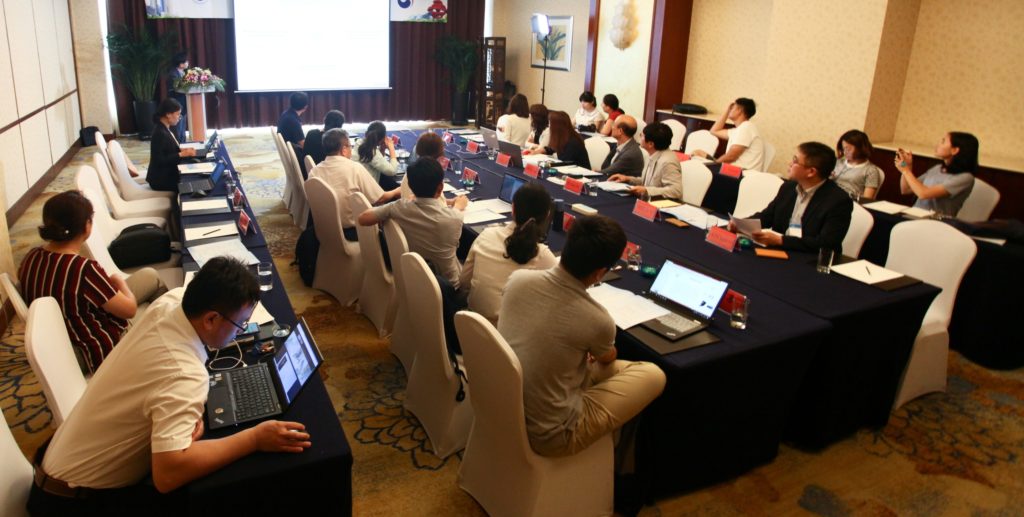
To access the Day 1 YSLME Science Conference report, click http://www.yslmep.org/wp-content/uploads/2019/06/DAY-1-YSLME-Science-Conference-Daily-Report.pdf
To access the Day 2 YSLME Science Conference report, click
To access other conference details, including presentations and abstracts, click http://www.yslmep.org/?mec-events=3rd-yslme-science-conference.
